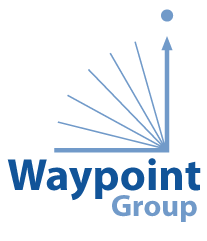As a community of business leaders we are getting better at listening to customers and learning how to empathize with them. This strengthens our relationships. However, we still have an Achilles’ Heel. When we listen but then take no action we run the risk of damaging those customer relationships we deeply value.
“As with many companies who practice Voice of Customer (VoC) initiatives, the key ingredient missing in the recipe for customer success is action,” says Steve Bernstein, CEO of Waypoint Group. Steve is a veteran of customer engagement strategies. He’s experienced the benefits when companies build action plans based on customer feedback and can tie those actions to company financials. And he’s seen the drawbacks when no action is taken. He’s written about this often, and one of his recent blog posts caught my attention.
Here’s a synopsis of his post:
About a year ago my firm had the opportunity to work with a large B2B technology company that wanted to embrace Net Promoter with all of its associated principles. This company wanted us only to help them execute (“field”) their survey. So we coded up their questionnaire (which was reasonably well-constructed), loaded up their list of contacts, ran their survey, and provided the comprehensive analysis of the survey results across the 6 different segments in which they conduct business.
The results clearly showed what you’d expect: Some areas of their business were falling short of customer expectations (“hot spots”), while other areas were very working well (“bright spots”) and were ripe for syndicating to the other parts of the business. There were clear financial implications and priorities. So after delivering the results report we parted as friends and they assured us they had everything needed to take effective action.
Fast-forward a year later to when they came back to us to run the survey once again. Naturally, the first question we asked was, “What actions did you take following the last survey?” Their response was a sheepish, “Nothing. But our CEO wants an updated number.”
So we re-ran the process. The finding was clear: Trouble.
For those contacts that were engaged enough to respond to both surveys, the results were striking. In every segment, the percentage of contacts with declining scores was greater than those with improving scores. Ouch.
My takeaways from this data?
Measurement itself will set expectations. Especially when you send a survey and a customer responds with a “cry for help” via low scores, your customers expect you to take action to drive improvement. If you don’t, you either set the expectation that their voice will never be heard or they need to be louder next time.
It is critical that you “demonstrate listening” to drive ROI from your feedback effort. Don’t survey and forget – tell your internal and external audiences what you heard and what changes (improvements) will be taken. Let them know you are paying attention. We have an opportunity (and an obligation) to improve the customer experience in every customer interaction. Surveys are no exception. In fact, your surveys really ought to exemplify the type of customer experience that you are trying to build across the company.
To read Steve’s entire post, click here.
Learn more about Waypoint Group and their expertise with Net Promoter loyalty programs and other tools.
Contact Steve Bernstein to learn more about Net Promoter programs and customer engagement strategies: Steveb@waypointgroup.org

